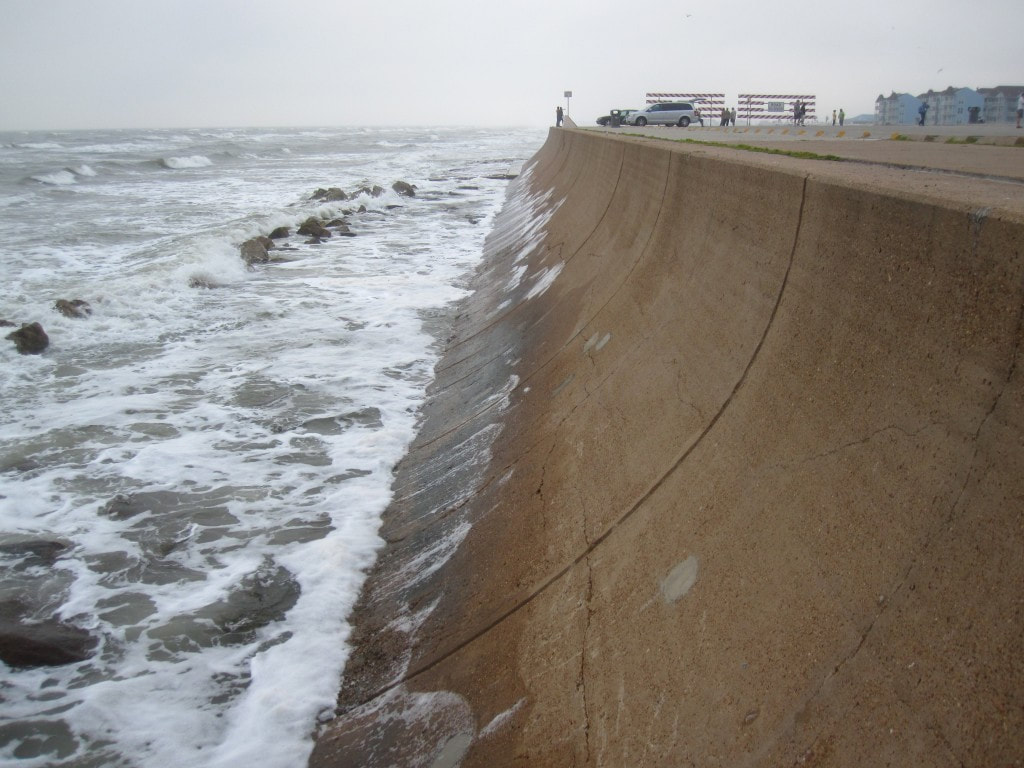The Urgent Threat Of Rising Sea Levels: Protecting Coastal Areas

Table of Contents
The Science Behind Rising Sea Levels
Rising sea levels are a direct consequence of global warming and climate change. The primary drivers are thermal expansion of seawater and the melting of glaciers and ice sheets. As the Earth's temperature increases, the volume of ocean water expands, leading to a rise in sea level. Simultaneously, the melting of glaciers and ice sheets in Greenland and Antarctica adds vast quantities of water to the oceans.
Data from the Intergovernmental Panel on Climate Change (IPCC) indicates a concerning rate of sea level rise, currently estimated at several millimeters per year. Projections for the coming decades suggest a significant acceleration, posing an existential threat to low-lying coastal areas.
Key contributing factors to rising sea levels include:
- Global warming and climate change: The primary driver, increasing ocean temperatures and melting ice.
- Melting polar ice caps: Greenland and Antarctica are experiencing significant ice loss, contributing substantially to rising sea levels.
- Thermal expansion of seawater: Warmer water occupies more volume, leading to a direct rise in sea level.
- Land subsidence in some coastal areas: Natural geological processes and groundwater extraction can cause land to sink, exacerbating the effects of rising sea levels.
Impacts of Rising Sea Levels on Coastal Areas
The consequences of rising sea levels are far-reaching and devastating, affecting both natural ecosystems and human populations. Coastal communities face a multitude of challenges, threatening lives, livelihoods, and infrastructure.
Key impacts of rising sea levels on coastal areas:
- Increased coastal erosion and flooding: Higher sea levels lead to more frequent and intense flooding, eroding coastlines and damaging properties.
- Saltwater intrusion into freshwater sources: Rising sea levels contaminate groundwater and freshwater aquifers, impacting drinking water supplies and agriculture.
- Damage to infrastructure (roads, buildings, etc.): Coastal infrastructure is vulnerable to damage from flooding, erosion, and storm surges.
- Displacement of coastal communities: Rising sea levels force people to abandon their homes and relocate, leading to displacement and social disruption.
- Loss of biodiversity and habitat destruction: Coastal ecosystems like mangroves, salt marshes, and coral reefs are highly vulnerable to rising sea levels and saltwater intrusion, leading to habitat loss and biodiversity decline.
- Economic losses due to damage and disruption: The economic costs of rising sea levels are substantial, encompassing damage to property, infrastructure, and lost productivity.
Strategies for Protecting Coastal Areas
Addressing the threat of rising sea levels requires a multifaceted approach that combines engineering solutions, nature-based strategies, and effective policies.
Different approaches for protecting coastal areas:
-
Engineering solutions: These include building seawalls, levees, and breakwaters to protect coastlines. While effective in the short-term, these structures can be costly, disruptive to natural ecosystems, and may not provide long-term protection against rising sea levels. Breakwaters, for example, can alter sediment flow and cause erosion elsewhere.
-
Nature-based solutions: These methods leverage natural processes to protect coastlines. Mangrove restoration, beach nourishment, and dune stabilization are examples of effective nature-based solutions that offer significant environmental benefits while providing coastal protection. They also enhance biodiversity.
-
Managed retreat: This involves relocating communities and infrastructure away from high-risk coastal areas. While a difficult decision with significant social and economic implications, managed retreat can be a necessary strategy in areas facing severe and unavoidable risks.
-
Improved coastal planning and zoning: Implementing strict building codes, land-use regulations, and coastal zone management plans can help minimize development in vulnerable areas and protect existing infrastructure.
-
Climate change mitigation: The most crucial long-term strategy is to reduce greenhouse gas emissions to slow the rate of sea level rise. This requires global cooperation and a transition to cleaner energy sources.
The Role of International Cooperation
Addressing the challenge of rising sea levels requires strong international collaboration. Global agreements like the Paris Agreement are crucial in establishing targets for reducing greenhouse gas emissions. International cooperation is also vital for sharing knowledge, technology, and resources to support vulnerable coastal communities in adapting to the impacts of rising sea levels. Initiatives focusing on coastal protection and climate change adaptation need sustained funding and global participation.
Conclusion
Rising sea levels pose a significant and urgent threat to coastal communities and ecosystems worldwide. The scientific evidence is clear, and the impacts are already being felt globally. To effectively protect our coastlines, a combination of engineering, nature-based, and policy solutions is crucial. We need to invest in robust coastal defenses, promote sustainable coastal management practices, and, most importantly, drastically reduce greenhouse gas emissions to mitigate the long-term effects of climate change. Take action today to protect our coastlines from the devastating effects of rising sea levels. Learn more about effective mitigation strategies and join the fight to preserve our coastal communities.

Featured Posts
-
 Max Orders Crazy Rich Asians Series From Director Jon M Chu
May 11, 2025
Max Orders Crazy Rich Asians Series From Director Jon M Chu
May 11, 2025 -
 Yankees Giants Series Whos On The Injured List April 11 13
May 11, 2025
Yankees Giants Series Whos On The Injured List April 11 13
May 11, 2025 -
 Analyzing John Wick Chapter 2s Unexpectedly Low Rotten Tomatoes Rating
May 11, 2025
Analyzing John Wick Chapter 2s Unexpectedly Low Rotten Tomatoes Rating
May 11, 2025 -
 Understanding Debbie Elliotts Impact
May 11, 2025
Understanding Debbie Elliotts Impact
May 11, 2025 -
 Szokujace Opowiesci Masazystki Ksiaze Andrzej Rozebrany Na Zabiegu
May 11, 2025
Szokujace Opowiesci Masazystki Ksiaze Andrzej Rozebrany Na Zabiegu
May 11, 2025
